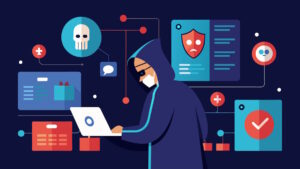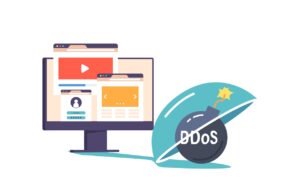Investing in your staff’s continual professional development should always be a high priority. Giving your staff the platform to expand their knowledge and upskill themselves in different competencies can help businesses prosper in the long run. One of the many avenues that employees could pursue is that of cyber security, an area which presents huge opportunities and potential, yet one which is experiencing a huge skills shortage for many companies.
As methods of cybercrime become more sophisticated and damaging, it also grows increasingly more difficult for humans to determine the legitimacy of a link, email, webpage or message. In fact, phishing attacks – one of the most common types of cybercrime – impact nearly one-third of organisations worldwide. Threats lurk around almost every corner of the internet, with statistics pointing to an estimated 30,000 website hacks daily.
Therefore, it might be in your company’s best interests to equip your team with essential skills and awareness about cyber security, whether they have a fervent interest in the field or not. This guide looks at why and how you can do that easily and effectively.
Why educate your staff about the modern cyber threat landscape?
According to Verizon, 82% of data breaches are the result of human error. Even if someone believes that they are meeting the correct security standards, threats are constantly evolving, with vulnerabilities exploited regularly through otherwise benign means. Some threat actors can go months without detection, with IBM reporting that it took businesses an average of 287 days to identify a data breach, not to mention containing it.
It’s unfathomable to think how much sensitive information could be intercepted and stolen in that time, which only proves how important proper cyber security awareness is.
Cyber security measures extend far beyond simply handing out information leaflets and hoping that your staff understand what a cyber attack looks like and how to contain them. This is simply not enough. All staff need to understand the role they have to play in ensuring they – as individuals – as well as the organisation, uphold compliance and remain safe from any malicious actors lurking in a network or system.
Effective cyber awareness comes from actionable strategies to emphasise the importance of keeping your data and information completely secure and uncompromised. One mistake or oversight could see data and information accidentally compromised and possibly lead to hefty financial losses and, worst case scenario, irreparable reputational damage.
As a starting point, business leaders and managers should ensure that they have the following in place:
- Antivirus software, ideally with built-in firewall and internet security protection.
- Two-factor authentication (2FA) on devices.
- SSL certification on the business’ website.
- Secure protection for wireless networks and email servers.
- A strong, unique password policy with all employees adhering to it.
The above provides some basic security essentials to put in place across the company. However, getting your team truly aligned with cyber security requires some further steps, which are outlined below.
How to get employees on board with cyber security compliance
Lead by example
Business leaders and managers have a duty to set a good example by showing that they care deeply about the security of their information, and that of the business’s clients, suppliers, staff and partners. A manager who leads by example demonstrates their commitment and dedication to safeguarding security by the day-to-day actions they take. They recognise the value in guiding potential managers by setting the right example as opposed to thinking that they know best and failing to comply themselves.
At a minimum, that good example is set by never sharing passwords or sensitive information publicly, and by actively participating in training programmes tailored to improving knowledge and awareness. Leaders and managers are just as susceptible to cyber attacks as anybody else, so employees must see them participating in the same way as they do.
Write a clear cyber security policy
From the outset, it’s important to put the standards for correct behaviour and expectations in writing. If you don’t clearly define what’s acceptable from a cyber security perspective, how can you expect your team to follow suit?
A cyber policy document that’s easy to understand, and shared amongst everyone with no exclusions, should outline standard practice and what to do in the event of a possible data breach. It should also justify why certain measures like strong password policies and Two-Factor Authentication are in place.
Develop accountability
Your employees need to understand the areas of security that they are responsible for, whether it’s their own or that of another party, or both. They need to understand the possible consequences of their actions, should any security measures be broken, knowingly or unknowingly.
Over time, policies and procedures will become less formulaic and employees will start to subconsciously and instinctively complete all tasks in line with best security practices.
Embed security within the culture
Security breaches and hacks often happen because of lapses in concentration or when corners are cut. Therefore, security measures must become part of the fabric of the company, so employees both new and experienced are following the correct procedures.
Some may be exasperated at the prospect of following stringent measures, but they must realise why the measures are there.
Make it part of the onboarding process
As new employees adjust to the working methods, systems, and tools of the organisation, it’s a good time to educate them about all cyber security compliance measures.
It might feel as though you are overloading them with information, but the first few weeks and months will see employees taking on board an excess of information anyway. In the long run, they will be grateful that they learned the right security procedures from the outset.
Provide regular in-depth training
The idea of completing regular staff training exercises usually results in mixed reactions. Even if a training session is engaging, there’s no guarantee that employees will retain all the essential pointers about cyber security beyond a day or so. If your company suffers a breach even after following this training, it becomes hard to justify.
Therefore, consider establishing an ongoing and automated awareness programme, providing employees with a detailed and informative understanding of new threats and how to spot them.
Incentivise it
This may be a left-field idea, but you never know how receptive employees will be if there are rewards or prizes to be won. If you make cyber security compliance a high priority and provide an entertaining incentive for staff to follow procedures, they will view it as something more than a tick-box exercise.
For instance, setting up a monthly competition provides a healthy and engaging goal for employees to keep in mind, and before long, security tactics will become second nature.
Hopefully, after digesting this information, you now feel more prepared to tackle the growing and evolving cyber threat landscape with improved employee awareness. Getting your employees on board may take time, but it will be worth it in the long run, and your company will eventually have a robust cyber security posture once you reach this goal.
If you’re exploring new training and detection tools, why not sign up for a free 14-day trial of our Cyber Security & Phishing Training programme?








